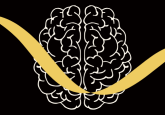Electrical neuro-stimulation: supercharging the mood to combat depression

A novel neural target for electrical stimulation has been identified in the battle against depression, successfully improving the recipient’s mood state.11058
A recent study led by Vikram Rao and Kirstin Sellers of the University of California, San Francisco (CA, USA) has uncovered a novel target in the brain for electrical stimulation in order to improve mood in patients living with depression. The study succeeded where previous studies into deep brain stimulation for mood disorders have failed, in identifying an effective stimulation target: the lateral orbitofrontal cortex (OFC).
The team studied 25 epilepsy patients, whose brains were already fitted with electrodes in order to identify the origin of their seizures and also experienced depression, a common condition amongst epilepsy patients. Using the electrodes, small pulses were delivered to the OFC and other areas of the brain that are associated with the regulation of mood. While the signals were being delivered, verbal mood reports and questionnaire scores were recorded.
The OFC is one of the most poorly understood regions of the brain, but is thought to play a key role in the regulation of mood, acting as a hub for mood-related circuitry in the brain.
The results of the study showed that stimulation, particularly of the lateral OFC, resulted in a dose-dependent improvement in the mood-state of subjects with depression. “Stimulation induced a pattern of activity in brain regions connected to OFC that was similar to patterns seen when patients naturally experienced positive mood states,” explained Rao. What’s more, the effect was not observed in participants without depression, indicating that the stimulation acts to normalize the activity in mood related neural circuitry.
These results contribute to the growing evidence that mood disorders are brought on by dysfunction in the brain’s circuits and show that electrical stimulation to specific areas of these circuits can be used to immediately relieve these disorders.
The next step for the research team is to establish if stimulation of the OFC can be used to create long lasting improvement in mood. Once this has been established, Rao hopes to develop a device that can monitor brain activity and deliver stimulation when necessary to maintain a healthy mood range. “Ultimately, it would be ideal if activity in mood-related brain circuits could be normalized indefinitely without patients needing to do anything,” explained Rao.
